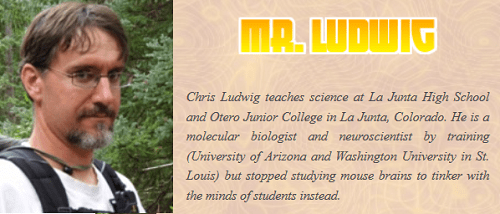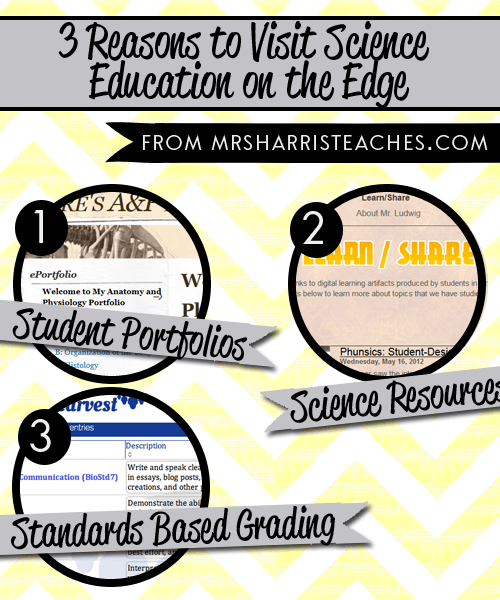Teacher Feature: Chris Ludwig
In the past I have featured Krissy Venosdale of Venspired and Darren Fix of Science Fix. This week I am honored to feature a molecular biologist and neuroscientist turned teacher – Chris Ludwig.
There are numerous reasons why I love Chris Ludwig’s work at Science Education on the Edge, his classroom webpage, and his student-centered Physics class site, but here are my top three:
ONE – Student Portfolios
If you have been wanting to implement e-portfolios in your classroom, check out Science Education on the Edge. Chris has his students create e-portfolios like this and this to share their learning.
TWO – Science Resources
You need to check out Chris’ classroom site. One resource you will find there is Chris Ludwig’s Collection of Science Resources on X-marks:
- Educational Technology (If you click on any of these, you MUST visit this collection!)
- Anatomy
- Biology
- Chemistry
- Physics
- Science Teaching
THREE – Standards Based Grading
Read all about Chris’ experiences with Standards Based Grading and check out his recommended feedback tool – Blue Harvest.
Of course, I wanted you to hear from Chris himself, so here are tidbits from our interview.
My physics course is a blast to lead. Last year I had a great set of kids who dove right in creating and problem solving from the first week of class. The focus was on engineering and design, with lots of failed prototypes as well as a few successful projects. That was probably my favorite part of running this class: students got to fail and go back to the white board several times before being satisfied with a (mostly) working model. I took a year off from the Physics class this past school year, but I’m looking forward to seeing what my new crop of students can make starting this fall.We did not take any end-of-course exam for the Physics course. Instead, the students organized a “Phunsics Day” to show off their projects and teach the community a bit about science and engineering. IMHO that’s a much more impressive assessment than any multiple choice test that I could give them.
I struggle with making my classes more student-centered because to be truly student-centered means that students would define the questions and problems that they want to solve in each class. I can pull this off in the Physics class because I am not trying to match my instruction to any particular curriculum guide, but my other preps (AP Biology, Anatomy, Biology, and Chemistry) are all tied to either College Board or Community College/State Dept. of Ed. curriculum. In other words, for a kid to do well on an AP test or get concurrent college credit for my other classes, I need to walk students through a certain amount (sometimes a ton!) of more or less required material. This really cuts down on how “student-centered” I can be when I am responsible for “coverage” of certain topics in each course.My advice (to myself as much as any of your readers) would be to incorporate tons of student choice into your courses. If you can work it so kids decide which topics and techniques they want to learn, then you are most of the way to being student-centered. If, like me, you find that sometimes difficult to pull off, then at least give students options in your assessment of what they learn. For example, I used to run a research project for chemistry students that focused on how LCD screens worked. The goal was for them to prove to me that they could successfully complete a research project. What I got were 40 projects, mostly all identical, often with the same graphics and text because all 40 students were reading similar sources about LCDs. Boring! Lately I revamped this project to be open to any topic reasonably connected to chemistry or physics and the student research projects have been amazing. I’ve learned about invisibility cloaks, touch screens, the natural gas industry, and how iPhone gyroscopes work, just to name a few student-chosen topics. Create opportunities for student choice whenever you can. It’ll spice up the class for you as well as your students.
For me, the switch of careers from fledgling scientist to high school teacher came from realizing that I worked really well with high school kids and that I had a blast doing so. Many of my early experiences teaching kids about science came from outreach programs organized by the universities I attended. I would encourage anyone who loves science to get involved in whatever outreach programs you can find at your local college or university. Start small, maybe give demos to a few kids at a time or perhaps act as a tutor, and see how you interact with them and they with you. You’ll soon figure out if you are good at teaching kids by the rapport you build with them. You can always take more classes to beef up your content knowledge and pedagogical skills but that love of sharing the world with kids has to be there first.




Leave a Reply